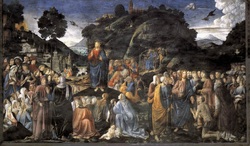How do we apply the Sermon on the Mount today? Especially the antitheses of Matt 5:21-48?11/28/2011 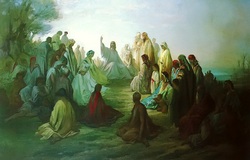 Gustave Dore, Sermon on the Mount Sermon on the Mount: Personal relationships: "But I say to you that everyone who is angry with his brother will be liable to judgment; whoever insults his brother will be liable to the council; and whoever says, 'You fool!' will be liable to the hell of fire.” (Matthew 5:21). Thought life and sexual ethics: “But I say to you that everyone who looks at a woman with lustful intent has already committed adultery with her in his heart” (Matthew 5:28). Speech: But I say to you, Do not take an oath at all...Let what you say be simply 'Yes' or 'No'; anything more than this comes from evil (Matthew 5:34+37). Attitude toward those who mistreat you: “But I say to you, Do not resist the one who is evil. But if anyone slaps you on the right cheek, turn to him the other also” (Matthew 5:39).
0 Comments
Jesus’ injunction to radical spiritual surgery to life as a Christian in contemporary America11/25/2011 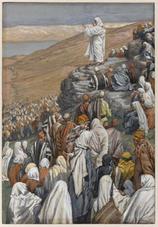 Life of Christ - James Tissot _ Sermon on the Mount: If your right eye causes you to sin, tear it out and throw it away. For it is better that you lose one of your members than that your whole body be thrown into hell. And if your right hand causes you to sin, cut it off and throw it away. For it is better that you lose one of your members than that your whole body go into hell (Matthew 5:29-30). Jesus is obviously using hyerbole, but His point is abundantly clear: remove anything in your life that is causing you to sin. Said in the words of John Piper, we must “wage war on sin” and these removals are preemptive strikes to neutralize things (potentially even good things) the enemy has commandeered to use as weapons against us. As the “Seven Deadly Sins” play out in America, this surgery could take the form of: 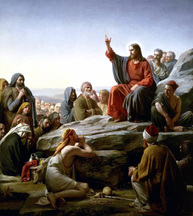 Carl Bloch - Sermon on the Mount Sermon on the Mount: Should Christians “protect” themselves in isolated Christian communities? The early monastic reformers went out to the deserts and other isolated retreats to escape the perjuries of the organized church in their day, but contrary to common understanding, they were not removed from the world. People came to them, sometimes traveling great distances to seek their wisdom (origins of mountain guru motif, don't you think?) especially since they weren't finding it in the church at that time. These early monks understood Christ's teachings that: 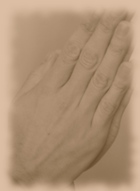 Jesus' healing of man's withered hand on the Sabbath marks the third time that He quarreled with the Pharisees over “breaking the Sabbath.” However, the real issue did not truly have to do with the Sabbath. In reality, this conflict was just a “reason to accuse Jesus” (Matthew 12:10) and grounds for a loaded question in an attempt to “bait Jesus into acting in such a way that they could produce evidence that he was Sabbath breaker” (Howell, 83). In short, “the Pharisees want a 'wrong' answer from Jesus” (Nolland, 487), for if they could prove that Christ violated their human rules, which they misconstrued as God's law, then by extension He was somebody they could write off and not have to listen to.  “After this he went out and saw a tax collector named Levi, sitting at the tax booth. And he said to him, 'Follow me.' And leaving everything, he rose and followed him.” Luke 5:27-28. Looking back, tax collectors seem more like ambitious entrepreneurs (an amiable quality today), than prostitutes and sinners as so likened in the synoptic gospels. During the Roman Empire, Palestinian officials had the direct responsibility for collecting regular taxes (poll taxes & land taxes), but the taxes on transported goods were outsourced to private contractors. These tax collectors “paid a stipulated sum in advance for the right to collect the tolls in a certain locality, and then tried to make a profit on the transaction” (Buttrick, 522).1 Roman taxes were seen as excessive and embezzlement by these tax collectors as inevitable, so they were repeatedly likened to robbers and thieves (so much so that lying to a tax collector was akin to deceiving bandits to avoid loss).  “And Jesus said to [the healed leper], 'See that you say nothing to anyone, but go, show yourself to the priest and offer the gift that Moses commanded, for a proof to them.'” (Matthew 8:4). Jesus instructions to the newly healed leper of not telling anyone are often misconstrued for secrecy, while overlooking the actual purpose of that secrecy. All three synoptic gospels reveal that Jesus wanted the leper to go to the temple priests and offer the necessary sacrifices to reenter society as proscribed by Moses, which would serve “as a testimony to them.” Thus, the purpose for Christ's command is not secrecy, but seemingly the opposite. He wants the leper “to obey the Levitical prescriptions for restoring his ceremonial purity...” as “evidence to authenticate his authority as Messiah” which the religious authorities in Jerusalem could assess in accordance to Jewish law (Howell, 68). 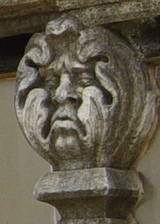 One of the negative aspects of the Enlightenment has been the rejection of the “non-empirical” which would include the spiritual realm and by extension demons (yet ironically the early enlightenment thinkers bowed down to the flame of reason...). However, Jesus the only omniscient man, “never discounted the reality of the demonic world (Elwell, 811)1. Since darkness conceals sinister things, demons (“unclean spirits,” “evil spirits,”) are the fallen angels that have inhabited the world since the creation, but at Christ's arrival, He initiated the advancement of the “kingdom of light” which “roll[ed] back the long unchallenged frontiers of darkness (Howell, 63). The exact location of the biblical city of Capernaum is not certain, but there are two serious sites on the north shores of the Sea of Galilee. Unlike Nazareth, Capernaum was referred to as an important city, which the mile-long archeological ruins support. The city flourished due to its proximity to a major East-West highway which crossed the Jordan river. Jesus spent an incredible amount of time in Capernaum, so much so that Mark refers to it as a place where Jesus was “at home” (Mark 2:1). It was in this city that numerous biblical accounts took place:
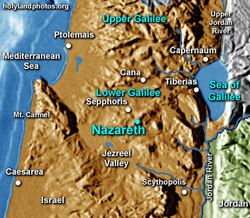 Courtesy of holylandphotos.org Luke's Gospel tells us that Nazareth is the town “where [Jesus] had been brought up.” The small town of Nazareth in the time of Christ is generally accepted to still be identified with modern Nazareth (Buttrick, 524). The city is approximately 20 miles from the Mediterranean and 15 miles from the Sea of Galilee which made it enough out of the way that few commercial business passed through. The city's altitude of 1300 feet above sea level made for a moderate climate with favorable rainfall for vegetation, but the overall lack of springs forced the city to rely heavily on cisterns. In Christ's time Nazareth was a small secluded village off the beaten path, insignificant in the fact that it doesn't appear any Hebrew literature (the Old Testament, the Talmud, the Midrash or Josephus). This reputation is furthered by Nathanael's reply in John's gospel: “can anything good come from Nazareth?” as a moderner might discount any backwater town out in the sticks with only one stop light. (1) Theological tenets: (Buttrick, 778)
|
AuthorBrett Yardley: Categories
All
Archives
January 2019
|
